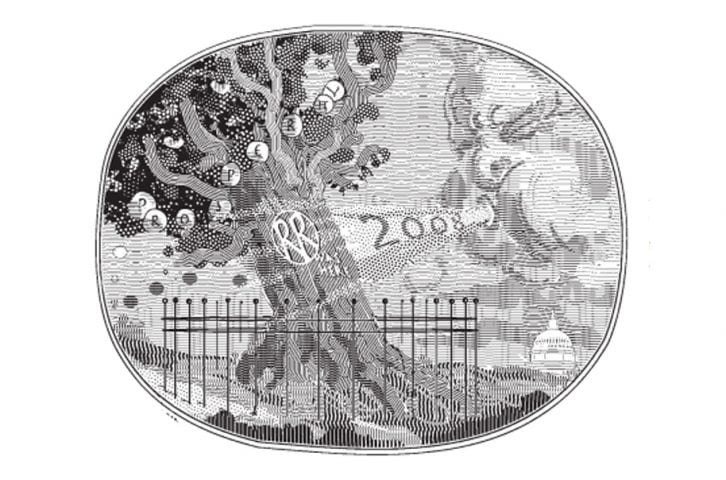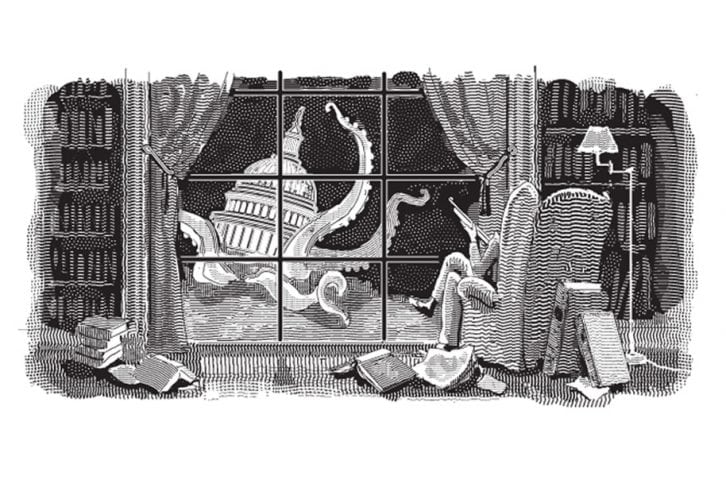On a late spring day in 1897, a crowd estimated at 20,000 gathered on Beacon Street at the steps of the Massachusetts Statehouse to celebrate the unveiling of the first memorial dedicated to the defeat of slavery in the United States. The bronze relief by Augustus Saint-Gaudens commemorated the 54th Massachusetts Volunteer Infantry—the first regiment of free Northern black soldiers inducted into the Union Army—their white officers, and, in particular, their commander.
Colonel Robert Gould Shaw was just 25 years old when he assumed his command in 1863. He was aware that the Confederacy would probably sentence to death any captured white officers who commanded black troops. His soldiers also understood that if they were taken prisoner they would be executed or sold into slavery, even if they had been born free men. The son of a socially prominent family of committed abolitionists, Shaw wrote, “If the raising of colored troops proves such a benefit to the country and to the blacks…I shall thank God a thousand times that I was led to take my share in it.”
On July 18, 1863, the soldiers of the 54th Regiment faced the ramparts of Fort Wagner, a massive Confederate earthwork that guarded the harbor at Charleston, South Carolina. Storming the fort on foot, Shaw and his men succeeded in gaining the parapet, but Shaw was killed trying to scale the walls. For unknown reasons, the Union army did not support their advance, and they were eventually driven out of the fort and off the walls. Almost half the soldiers were killed, wounded, or missing in action. Confederate Lieutenant Iredell Jones later recalled, “The Negroes fought gallantly, and were headed by as brave a colonel as ever lived.”
Corporal James Henry Gooding of the 54th described Shaw’s death for the New Bedford Mercury: “We were exposed to a murderous fire…. Col. Shaw seized the staff when the standard bearer fell, and in less than a minute after, the Colonel fell himself…. He was [stripped of his clothes and] buried in a trench with 45 of his men! Not even the commonest respect paid to his rank.” The Shaw family, however, considered this intended ignominy an honor, and spurned all efforts to recover their son’s body. Knowing that no other officer in the Civil War had been treated in this manner, Shaw’s father, Francis George Shaw, wrote, “Since learning of the place of our dear dead son’s burial, we would not remove his body if we could. We can imagine no holier place than that in which he lies, among his brave and devoted followers, nor wish for him better company.” Col. Shaw had left instructions that he was to be buried with his men, forgoing the officer’s privilege of having his body shipped home.
* * *
Soon after the subsequent fall of Fort Wagner, on September 6, 1863, the men of the 54th Regiment raised funds toward a modest stone memorial to Shaw to be built nearby. Due to local hostility, the memorial was blocked and the money went instead to found the first free school for black children in Charleston. In 1865, Joshua Smith, a fugitive slave who had become a businessman in Boston, proposed a memorial to “commemorate the great event, wherein [Shaw] was a leader, by which the title of colored men as citizen-soldiers was fixed beyond recall.” A committee was formed under Governor John Albion Andrew to commission an equestrian statue of Shaw.
The matter lapsed until 1882, when the architect H. H. Richardson, a friend of the Shaw family, presented sketches for a memorial to the Andrews committee and recommended that Augustus Saint-Gaudens, a young sculptor who had emigrated from Ireland to the United States as an infant, be awarded the commission. At the time, he was acclaimed for his remarkable statue in New York City of Admiral David Farragut.
Saint-Gaudens’s first sketch simply showed Shaw astride a horse, but Shaw’s family rejected it as inappropriate because their son had been an officer of the infantry who died leading a charge on foot. Heeding their criticism, the young sculptor decided to start over. Through discussions with Shaw’s father, he attained a deeper understanding of the young colonel and the legacy of the 54th in legitimating the role of black soldiers in the military. Their conversations helped Saint-Gaudens identify the memorial’s proper subject: Shaw on horseback riding next to his soldiers as they marched together to war. That was the basis of the sculptor’s new maquette in April 1883, which was immediately accepted by the family.
Saint-Gaudens struggled for the next 13 years to give life to this vision. On the monument, Shaw is modeled in unusually high relief and rides alongside a group of 23 soldiers marching in ranks four deep. Every soldier’s face is a distinct portrait; each figure is unique, with his own gait and posture, reinforced by variations in the position of legs, arms, packs, and rifles. Saint-Gaudens sculpted 40 portraits, from which he selected 16 for the memorial. Some of these soldiers had been slaves, men with no rights, classified as chattel. Shaw’s father taught Saint-Gaudens that the recognition of each soldier’s identity was central to understanding the reason his son rode to war. Saint-Gaudens’s modeling was so successful that William James, who spoke at the monument’s unveiling, felt he could hear the bronze figures breathe.
* * *
In the composition there is a vivid sense of the regiment’s determined forward movement—a group of men heading directly into destiny. To achieve this, Saint-Gaudens imparted a slight forward inclination to the marching men so that one almost feels the throb of the drum and the cadence of their feet. Indeed, the impression of motion is so powerful that one can imagine the rest of the regiment on either side of the memorial.
The right-hand side of the bronze sculpture is inscribed with the words, “Omnia relinquit servare rempublicam,” or, “He forsook all to serve the republic.” The inscription refers both to Cincinnatus, who twice saved the Roman Republic from disaster and then, refusing all rewards, returned to his farm, and to George Washington, who likewise served without pay and returned to farming after the Revolutionary War. The motto links republican government and the American Revolution with the then unfinished business of abolition.
Despite its relatively small size—11 feet tall and 14 feet wide—the memorial has a monumental presence. The setting was designed by the architect Charles McKim of McKim, Mead & White, who also came from a family of committed abolitionists. In an unusual move, he framed the bonze relief with limestone pilasters and an exquisite arch. He placed the sculpture on a low masonry wall that forms a U-shaped terrace, set apart from its surroundings by a single step.
The memorial conveys a sense of weightlessness, of capturing a moment in time, as it draws part of its meaning from its historic setting facing the statehouse. This reminds observers of the American Revolution and Massachusetts’s tradition of fighting for freedom—from the Boston Tea Party to the battle for Bunker Hill. A passerby’s attention is initially drawn to the memorial because it is set back from the street and distinguished by its paved terrace and surrounding wall. Decorative urns enhance the wall at the two corners, and stately elm trees quietly bracket the composition.
The rear of the memorial stands on a retaining wall 12 feet above Boston Common. Seen from Beacon Street, the memorial seems to float against a backdrop of trees and distant buildings. The windows of the far-off buildings are so much smaller than the figures in the memorial that Shaw and his men appear larger than life. But the figures are actually sculpted somewhat smaller than life-size, so they seem at the same time vulnerable. This capacity to appear both larger and smaller than life imbues the memorial with a poignant vitality.
The soldiers in the relief are marching down Beacon Street, past Boston Common and the statehouse, just as they did when they left Boston for South Carolina. On May 31, 1897, as part of the ceremony dedicating the new memorial, veterans of the 54th, some white-haired and disabled, marched past it, but in the opposite direction as if returning home, remembering their lost comrades. Deeply moved, Saint-Gaudens wrote that “[t]he impression of those old soldiers, passing the very spot where they left for the war so many years before, thrills me even as I write these words.”
* * *
The enduring power of the Saint-Gaudens sculpture resides in its acknowledgement of the common humanity of black and white Americans marching together, bearing arms together, and fighting and dying together. The Shaw family represented every family of every race who lost a son in the Civil War. By presenting a single vivid example of the union of the nation’s black and white citizens, the memorial assumed a burden of national significance.
From the outset, the Shaw family considered it “simple justice” that the memorial include the names of the officers and men who fell at Fort Wagner and were buried with Col. Shaw. Unfortunately, the names of the black soldiers were not incorporated until 1982.
Beyond the élan of drumbeat and marching feet, the Shaw Memorial exudes sadness. Here are young Americans marching to war, to fight in defense of the Union and against slavery. A century later, in the midst of the nation’s civil rights protests, the great poet Robert Lowell described the memorial as “a fishbone in the city’s throat.” It was a lone beacon reminding Boston and the rest of the nation of their failures to reconcile the cruel reality of life for black Americans with our noble belief that “all men are created equal.” At the unveiling, William James voiced the same sentiment when he said that the black soldiers of the 54th personified “our American religion…the faith that a man requires no master” and that all Americans can “work out their salvation well enough together if left free to try.” The presidency of Barack Obama, the grandson of a Kenyan cook, is a continuing reminder of just how prescient James was when he confronted his audience with these words, so central to our American political creed.
This essay is adapted from a Allan Greenberg’s forthcoming book on memorials, Discourses in Stone.



